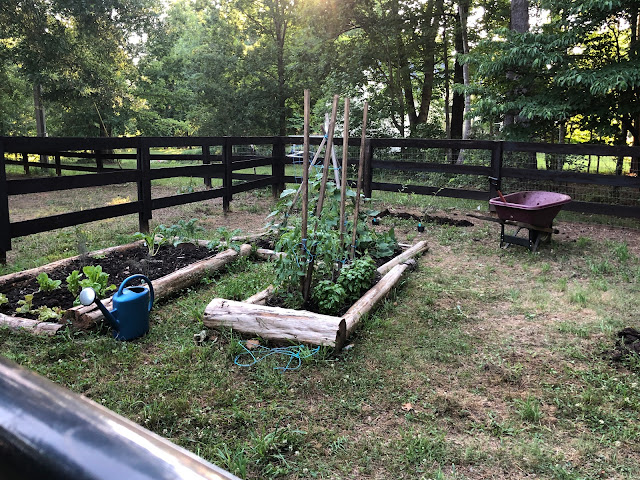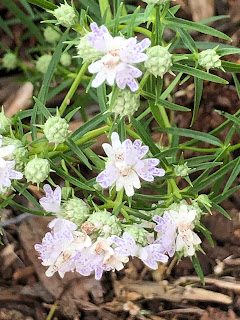Sunday, June 14, 2020
Brown Bunny’s Potager, an update
Saturday, June 13, 2020
Bloom update: elderberry flowers!
Friday, June 12, 2020
What’s Coming Up In The Garden, 49: swamp milkweed
Asclepias incarnata subsp. pulchra
Common Name(s):
- Phonetic Spelling
- as-KLEE-pee-as in-kar-NAH-tuh PUL-kruh
- Description
Eastern Swamp Milkweed is a native wildflower found in bogs, marshes and other wet sites. It can be found on the coast, Piedmont and mountain areas of NC. It is similar to A. incarnata but can be distinguished by its broader leaves, bushier appearance, and deeper bloom color (though it can be highly variable). It grows 2-4 feet high and the 5-inch seed pods persist into winter. It was chosen as the 2005 NC Wildflower of the Year.
Although it naturally grows along ponds, streams, swamps and bogs, this plant will do well in low lying areas of the garden that retain moisture. It is tolerant of clay soils and will grow in full sun to partial shade. It is pollinated by bees and is a host plant for the monarch butterfly. Use in a native/pollinator garden.
Thursday, June 11, 2020
Bloom update: swamp milkweed, narrow leaf mountain mint, hoary skullcap, coneflower, rattlesnake master
Monday, June 08, 2020
Bloom update: Stokes’ aster, hoary skullcap, Queen Anne’s lace, and a bumblebee
We have a lone volunteer Queen Anne’s lace plant on the side strip along the driveway. It’s over four feet tall and I got this close up of the flower but then the male dogs came and lifted their legs on it, so I moved on without getting the quite beautiful leaves below. I’ve grown up seeing these flowers along roadsides and it’s nice to have one right here at home.
The hoary skullcap I planted is just starting to bloom and oh, how lovely it is. It will be wonderful when these spread a bit and create a larger patch of color.
More Stokes’ aster (Peachie’s Pick) in the garden. This plant has flowers that are opening much wider and flatter than the others are doing, and as always, it’s interesting to see how in the same patch of ground things just grow differently. The beauty of a garden! If I were a bee I think I would snuggle into the soft center of this one for a nap.
And down at the other grouping of asters, I captured a bee going from one to the other. The sun drops, the butterfly weed, and these asters are all abuzz with activity today, as are the coneflowers.



















